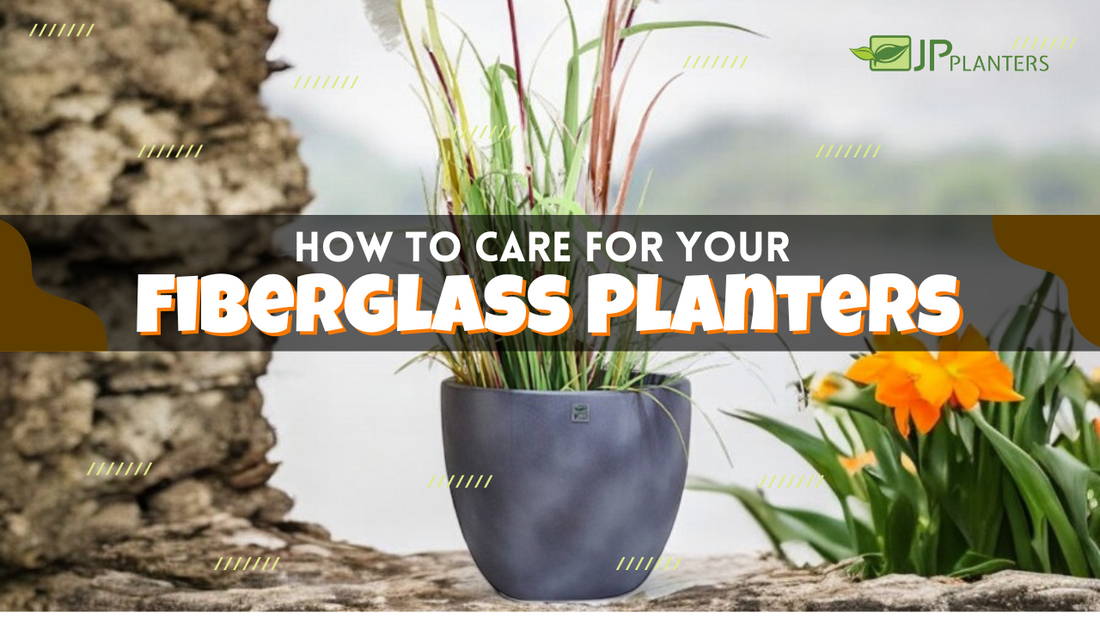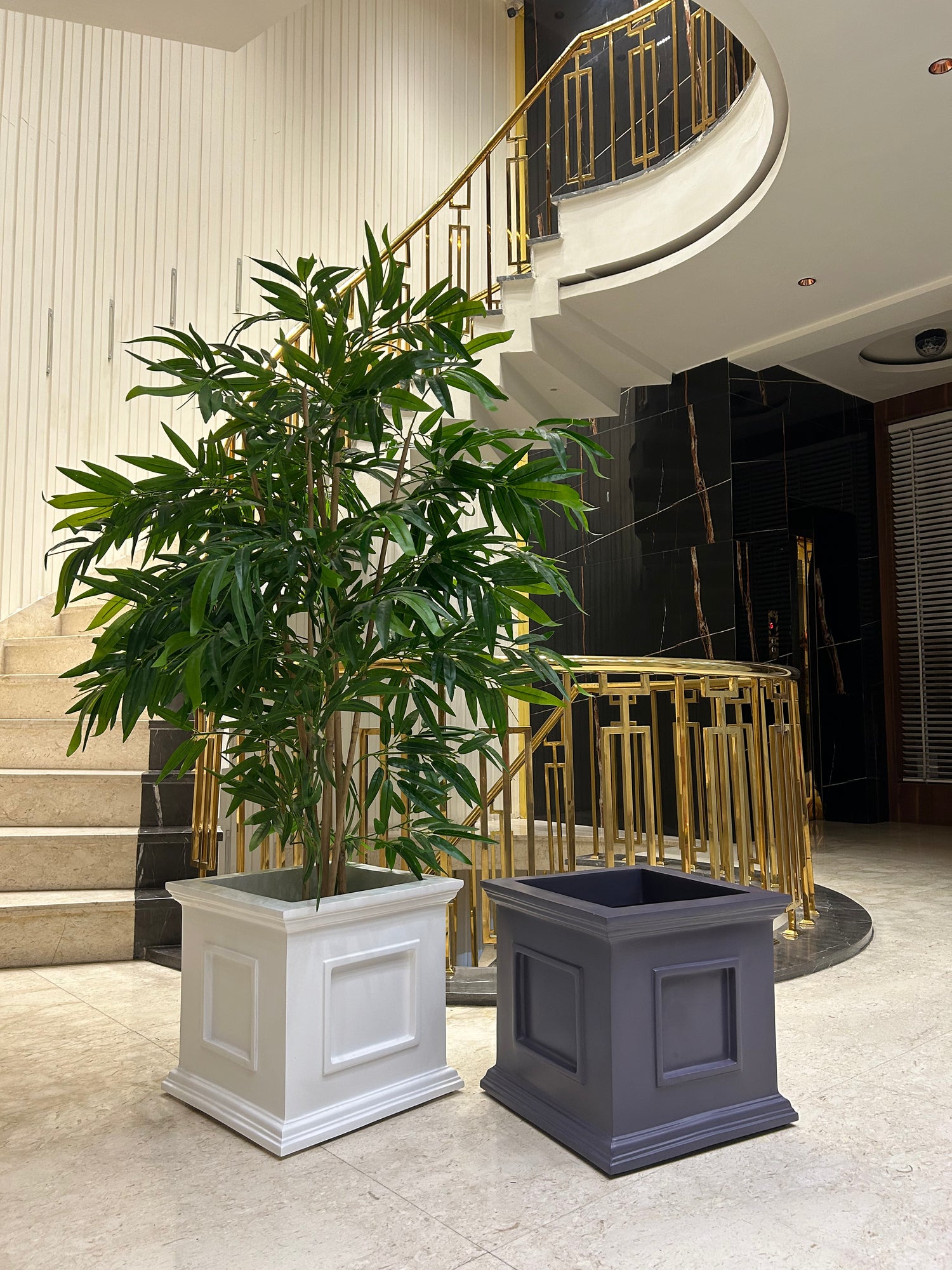
How to Care for Your Fiberglass Planters
Share
Fiberglass planters, also known as FRP Planters, are a fantastic choice for both indoor and outdoor gardening. They are lightweight, durable, weather-resistant, and available in various stylish designs to complement any space. However, to maintain their aesthetic appeal and functionality, it’s crucial to follow a proper care and maintenance routine. In this blog, we will guide you on how to take care of your Indoor Planter, Outdoor Planters, and Gardening Plant Pots to ensure they stay in top condition for years to come.
Why Choose Fiberglass Planters?
Before diving into maintenance tips, let’s quickly highlight why FRP Planters are preferred over traditional materials like ceramic, plastic, or terracotta:
-
Lightweight yet durable – Perfect for easy movement and long-lasting use.
-
Weather-resistant – Withstands extreme temperatures, making them ideal outdoor planters.
-
Stylish and modern designs – Suitable for both home and commercial spaces.
-
Low maintenance – Requires minimal upkeep compared to other materials.
Now that we understand their benefits, let’s look at how to properly care for them.
1. Cleaning Your Fiberglass Planters
Regular cleaning is essential to keep your Indoor Planter or Outdoor Planters looking fresh and new.
Cleaning Process:
-
Use a soft cloth or sponge with mild soap and warm water to wipe down the surface.
-
For tougher stains, mix equal parts vinegar and water and gently scrub the area.
-
Avoid using abrasive materials like steel wool, which can scratch the finish.
-
Rinse thoroughly with clean water and dry with a soft cloth.
Cleaning your gardening plant pots once a month prevents dirt buildup and keeps them looking elegant.
2. Protecting Fiberglass Planters from Sun and Moisture
While FRP Planters are UV-resistant and designed for outdoor use, prolonged exposure to harsh sunlight can fade the color over time.
Protection Tips:
-
Place outdoor planters in partially shaded areas to reduce direct sun exposure.
-
Apply a UV-resistant sealant or wax to maintain their glossy finish.
-
If using an indoor planter, avoid placing it near heating vents or radiators to prevent material expansion and contraction.
3. Preventing Cracks and Structural Damage
Though FRP Planters are highly durable, improper handling can lead to cracks or structural damage.
Preventive Measures:
-
Always lift the planter from the base rather than dragging it.
-
Ensure your gardening plant pots have adequate drainage to prevent water accumulation, which can lead to structural stress.
-
Use protective pads or felt under indoor planters to prevent scratches on delicate surfaces like wooden floors.
4. Proper Drainage and Watering
Maintaining proper drainage is crucial for plant health and for extending the lifespan of your FRP Planter.
Drainage Tips:
-
Most outdoor planters come with pre-drilled drainage holes; ensure they are not blocked.
-
If your indoor planter doesn’t have drainage holes, use a layer of pebbles at the base before adding soil.
-
Avoid overwatering, as stagnant water can lead to root rot and damage the planter.
5. Seasonal Care for Outdoor Planters
Changes in seasons can impact the condition of your FRP Planters, especially if they are placed outdoors.
Seasonal Maintenance:
-
In winter, avoid leaving your outdoor planters exposed to heavy snowfall; move them to a covered area or use plant covers.
-
During the rainy season, ensure that the drainage system is working efficiently to prevent excess water retention.
-
For summer, keep your gardening plant pots shaded to prevent overheating and drying out the soil too quickly.
6. Repainting and Refinishing
Over time, your FRP Planter may develop minor scratches or lose its original shine. Fortunately, refinishing is an easy way to restore its beauty.
Steps to Repaint:
-
Clean the planter thoroughly and let it dry.
-
Lightly sand the surface with fine-grit sandpaper.
-
Apply a primer suitable for fiberglass.
-
Use a high-quality spray paint designed for FRP Planters.
-
Finish with a clear sealant for added protection.
7. Choosing the Right Plants for Fiberglass Planters
Your FRP Planter is only as good as the plants it holds. Choosing the right plants ensures long-lasting greenery while also complementing the planter’s design.
Best Plants for Fiberglass Planters:
-
For Indoor Planters: Snake plants, pothos, ferns, and ZZ plants.
-
For Outdoor Planters: Lavender, boxwood, succulents, and ornamental grasses.
-
For Gardening Plant Pots: Herbs like basil, mint, and rosemary thrive in fiberglass containers.
8. Where to Buy High-Quality Fiberglass Planters
If you’re looking to invest in premium FRP Planters, choose reputable online retailers that specialize in durable, stylish gardening plant pots. Many online stores offer a wide selection of indoor planters and outdoor planters to fit your gardening needs.
Conclusion
Caring for your FRP Planter is simple and rewarding when you follow the right maintenance steps. Regular cleaning, proper drainage, seasonal care, and repainting when needed will keep your indoor planter, outdoor planters, and gardening plant pots in excellent condition for years. By taking these precautions, you ensure that your fiberglass planters remain an elegant and functional part of your home or garden setup.
Ready to elevate your plant game? Start taking care of your fiberglass planters today and enjoy their beauty for a lifetime!




